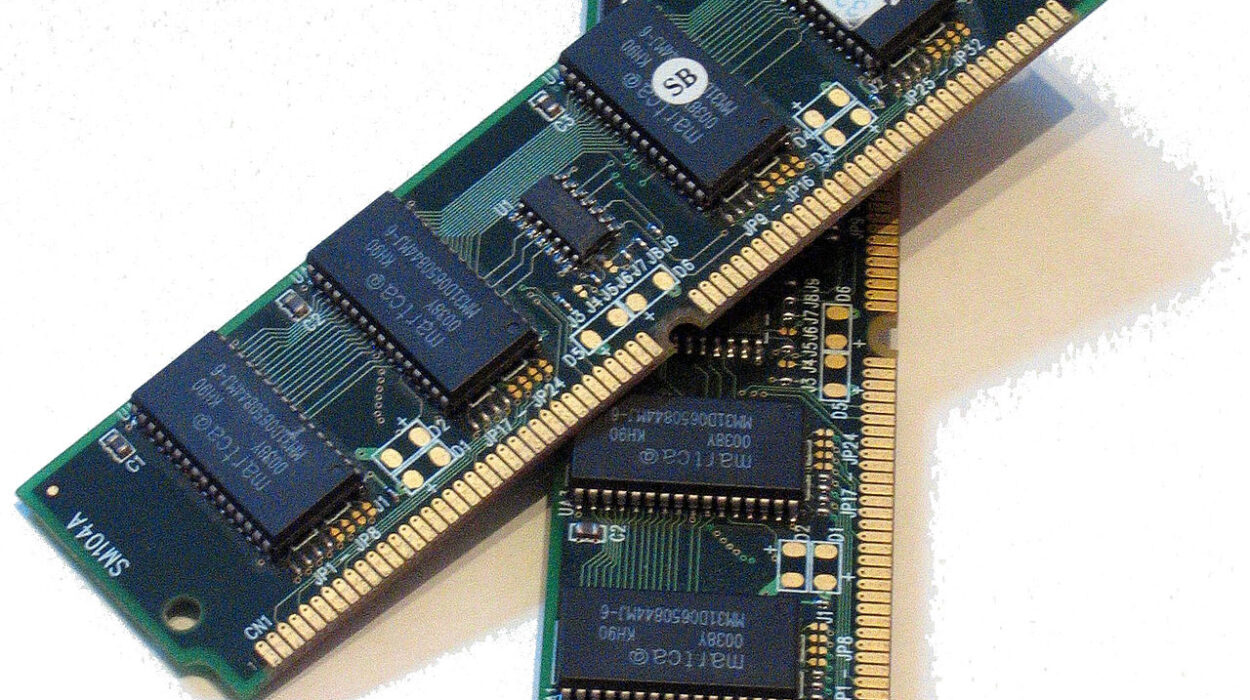The rise of artificial intelligence has fundamentally reshaped software development. Over the past decade, low-code and no-code platforms like OutSystems, Mendix, and Microsoft Power Apps have made it possible for non-programmers to create software applications rapidly. However, the next wave of transformation is being driven by artificial intelligence—specifically, AI-driven development tools that can automate code generation, optimize workflows, and even design full applications with minimal human intervention. By 2026, these AI-based tools are projected to surpass traditional low-code platforms, offering greater flexibility, efficiency, and scalability. They are not only democratizing development further but also redefining what “coding” means in the age of intelligent automation.
The following seven AI tools represent the vanguard of this revolution. Each combines machine learning, natural language understanding, and intelligent automation to simplify the creation of complex software systems, eliminating the limitations of today’s low-code solutions.
1. GitHub Copilot X
GitHub Copilot X is a major leap forward in AI-assisted programming, building on the foundation of the original GitHub Copilot that was powered by OpenAI’s Codex model. Copilot X introduces conversational interfaces, documentation generation, and pull request automation—turning it into a full-fledged AI development environment. Rather than relying on rigid templates or drag-and-drop elements, developers can now interact with their codebase through natural language commands.
Copilot X integrates directly into Visual Studio Code, JetBrains IDEs, and even GitHub’s web interface. Its AI can generate, refactor, and explain code across multiple languages, dramatically reducing the manual effort required in traditional coding. Unlike low-code platforms, which often restrict developers to predefined frameworks, Copilot X operates in native programming environments, giving full control over customization and scalability.
By 2026, GitHub Copilot X and similar AI-powered IDE companions are expected to replace many low-code systems for enterprise application development. The advantage lies in maintaining flexibility without the constraints of proprietary visual interfaces. Developers can build sophisticated, production-grade software while relying on AI to handle repetitive coding tasks, enforce best practices, and ensure code consistency. Its integration with GitHub’s ecosystem also means seamless version control, security scanning, and deployment automation—capabilities that surpass what most low-code platforms offer.
2. Google Gemini Code Assist
Google’s Gemini Code Assist, an evolution of the company’s Bard and Codey projects, represents a new era of AI-based code generation. Built on top of Google DeepMind’s Gemini architecture, this tool leverages multi-modal reasoning and vast pretraining across text, code, and technical documentation. Gemini Code Assist is capable of understanding high-level project requirements and generating end-to-end applications, including UI design, database schema, and backend logic.
While traditional low-code platforms rely on user inputs through visual builders, Gemini Code Assist uses natural language understanding to interpret developer intentions. A developer can describe an application’s purpose or functionality, and the AI translates that description into fully functional, optimized code in real time. Gemini’s integration with Google Cloud allows it to automatically configure hosting environments, security layers, and scaling parameters.
The strength of Gemini Code Assist lies in its context awareness and adaptability. It continuously learns from user projects, improving its understanding of an organization’s coding standards, preferred frameworks, and business rules. Unlike low-code systems that often generate rigid, opaque codebases, Gemini produces clean, modular, and well-documented code that can be maintained and extended by human developers. By 2026, such tools will make traditional low-code workflows obsolete by providing automation with complete transparency and scalability.
3. Meta’s Code LLaMA Suite
Meta’s Code LLaMA Suite is one of the most advanced open-source AI toolkits for programming assistance. Derived from the LLaMA 3 foundation models, Code LLaMA is fine-tuned for a variety of programming languages including Python, C++, Java, and TypeScript. It can perform code completion, debugging, translation between languages, and context-aware documentation generation. What makes Code LLaMA particularly significant is its open-weight design, enabling full customization and local deployment.
Low-code platforms typically operate as closed systems that limit developer control. Code LLaMA, on the other hand, allows organizations to integrate AI-assisted coding into their private infrastructure, preserving data security and compliance. Enterprises can fine-tune Code LLaMA on internal codebases to create custom assistants tailored to their specific workflows. This flexibility makes it ideal for large corporations and government entities where proprietary code cannot be shared externally.
By combining the transparency of open-source AI with the power of generative language modeling, Code LLaMA blurs the line between traditional programming and natural language development. Developers can describe their goals in plain English and have the AI generate code that meets enterprise standards, all while maintaining full auditability. By 2026, open-source models like Code LLaMA will replace low-code platforms in sectors requiring tight security, transparency, and integration with existing systems.
4. OpenAI DevGPT
OpenAI’s DevGPT represents a new paradigm in AI-driven software development. Unlike narrow assistants that focus only on code generation, DevGPT acts as a full software architect. It can design, implement, test, and optimize applications based on textual requirements, integrating AI agents that collaborate throughout the development lifecycle. DevGPT extends beyond code completion to encompass project management, requirement gathering, and continuous integration automation.
Traditional low-code systems attempt to simplify development by abstracting away complexity through visual interfaces. DevGPT eliminates that need by interpreting natural language specifications and converting them into modular, maintainable software systems. It can generate API endpoints, configure databases, and even suggest architectural patterns like microservices or event-driven designs. The AI also performs real-time reasoning, ensuring that the generated components align with scalability and performance constraints.
Moreover, DevGPT integrates deeply with DevOps pipelines. It can write CI/CD configurations, manage deployments across cloud environments, and perform automated code reviews. Its ability to self-debug and refactor code reduces dependency on human intervention during maintenance cycles. By 2026, such autonomous AI agents will replace low-code platforms not just by simplifying development but by managing entire software ecosystems, transforming how teams collaborate and build products.
5. Mistral AI Studio
Mistral AI Studio is an emerging powerhouse in the field of generative AI development. Built around the efficient and high-performance Mistral models, the platform focuses on making AI-driven software creation scalable and resource-efficient. Unlike traditional low-code systems that rely heavily on graphical interfaces, Mistral AI Studio employs natural language-based workflows, where developers and non-developers alike can describe applications conversationally.
One of Mistral AI Studio’s defining features is its modular agent-based architecture. Instead of relying on fixed templates, it spawns intelligent agents that specialize in specific development domains—frontend design, backend logic, data modeling, or testing. These agents collaborate autonomously to produce cohesive applications that meet specified requirements. The process mimics the workflow of a real software team, but with machine-driven speed and precision.
Mistral AI Studio also emphasizes performance optimization. Its AI models are designed to generate compact, efficient code that runs with minimal latency and resource consumption. This makes it highly suitable for edge computing and mobile applications, areas where low-code platforms typically struggle due to their bloated, auto-generated code. With local deployment options and strong privacy guarantees, Mistral AI Studio offers a balance of efficiency, control, and adaptability. By 2026, it is expected to be one of the leading replacements for low-code systems in high-performance and resource-sensitive industries.
6. Replit Ghostwriter Next
Replit Ghostwriter Next is a next-generation AI coding environment built for rapid iteration and collaboration. As part of Replit’s mission to make programming accessible to everyone, Ghostwriter Next combines natural language code generation with real-time deployment and debugging tools. Unlike low-code platforms that isolate developers from actual code, Replit places users directly in an interactive environment where AI acts as a mentor and collaborator.
Ghostwriter Next uses a blend of large language models and fine-tuned agents trained on open-source repositories and Replit’s own user data. It can write entire applications from textual prompts, diagnose runtime errors, and optimize performance on the fly. What distinguishes Ghostwriter Next is its end-to-end integration: users can go from idea to deployed web app within minutes, entirely within the browser. The AI automatically handles configuration, environment setup, and dependency management.
Furthermore, Ghostwriter Next includes AI-driven project scaffolding, allowing developers to specify an app’s goals and instantly receive a structured codebase. Unlike low-code platforms that output rigid solutions, Ghostwriter-generated code remains editable, maintainable, and version-controlled. The platform also incorporates AI-powered collaboration features, where multiple users can co-develop with shared context and automated merge resolution. By 2026, Ghostwriter Next is poised to dominate the developer market as an AI-native alternative to low-code tools, combining flexibility with the simplicity of conversational development.
7. Cognition Labs’ Devin (AI Software Engineer)
Devin, developed by Cognition Labs, represents the most advanced realization of an autonomous software engineer. It goes far beyond low-code automation by acting as a fully capable developer agent that can understand complex specifications, plan its own tasks, and write production-ready code autonomously. Devin can read technical documentation, navigate repositories, and even deploy applications independently.
Where low-code platforms depend on prebuilt components and human orchestration, Devin operates autonomously within standard developer environments. It can set up development stacks, integrate APIs, write unit tests, and manage iterative debugging. Its long-context memory enables it to track project goals and maintain coherence across thousands of lines of code. This allows Devin to handle multi-step projects that span days or weeks—something that traditional automation tools cannot achieve.
The significance of Devin lies in its reasoning ability. It is not simply a code generator; it can interpret business logic, make architectural decisions, and explain its choices in human-understandable terms. In enterprise environments, Devin can act as an AI collaborator for human teams, accelerating product development cycles by orders of magnitude. By 2026, agents like Devin will represent the pinnacle of AI-assisted development, rendering low-code and no-code platforms obsolete by offering true cognitive automation.
Why AI Tools Will Replace Low-Code Platforms
The underlying reason AI tools are set to replace low-code platforms by 2026 lies in their adaptability, intelligence, and scalability. Low-code systems were originally designed to bridge the gap between business users and developers by providing visual interfaces for application creation. However, they often impose rigid templates, limited customization, and opaque code generation. AI-driven development, in contrast, operates through language and reasoning, removing these limitations entirely.
AI tools like GitHub Copilot X, Gemini Code Assist, and Devin can understand intent rather than syntax. They generate real code in popular programming languages, maintaining flexibility and allowing developers to fine-tune performance, security, and scalability. Moreover, these AI tools integrate seamlessly into modern software pipelines, enabling continuous testing, deployment, and monitoring—capabilities that low-code systems typically lack.
Another key advantage is sustainability. AI-based development workflows produce clean, standardized, and efficient code that integrates into any technology stack. This ensures long-term maintainability, whereas low-code systems often lock users into proprietary ecosystems. Open-source AI frameworks, particularly those based on models like LLaMA or Mistral, empower organizations to own their entire development pipeline, ensuring data privacy and intellectual property control.
Cost and productivity are also decisive factors. Low-code licenses can be expensive, especially for large enterprises, and scaling applications within those platforms often incurs hidden costs. AI tools, on the other hand, scale linearly with computational power and data availability. They reduce manual effort through automation, enabling teams to achieve more with fewer developers and resources. By 2026, as AI models become even more efficient and accessible, organizations will naturally migrate toward these intelligent solutions for their cost-effectiveness and autonomy.
The Evolution from Low-Code to AI-Native Development
The transition from low-code platforms to AI-native development represents a natural evolution in software engineering. The first phase of democratized software creation focused on reducing the need for manual coding. The next phase, powered by AI, eliminates not only the need for coding syntax but also the need for rigid templates. It allows humans to interact with machines through intent, guiding them through natural conversation instead of drag-and-drop workflows.
AI-native development tools combine cognitive reasoning with automation, enabling dynamic problem-solving. They are capable of learning organizational patterns, coding standards, and user preferences, continuously improving their performance over time. This creates a self-optimizing ecosystem where AI and humans collaborate symbiotically. Rather than replacing developers, AI tools amplify their capabilities, freeing them from repetitive tasks and enabling focus on creativity, strategy, and architecture.
By 2026, AI-native tools will dominate the software creation landscape. They will integrate seamlessly with cloud infrastructures, DevOps pipelines, and data ecosystems, automating everything from design to deployment. Enterprises will move away from vendor-locked, GUI-driven low-code solutions toward adaptive, model-driven frameworks where AI acts as the developer’s co-pilot, architect, and manager all at once.
Conclusion
Artificial intelligence is poised to redefine software development over the next few years. Tools like GitHub Copilot X, Gemini Code Assist, Code LLaMA, DevGPT, Mistral AI Studio, Replit Ghostwriter Next, and Cognition Labs’ Devin are already demonstrating capabilities that surpass traditional low-code platforms in flexibility, scalability, and intelligence. By 2026, these tools will dominate enterprise and consumer software development, not by simplifying code alone, but by understanding intent, reasoning through complexity, and autonomously building complete systems.
The shift from low-code to AI-native development is not merely a technological transition—it is a paradigm shift in how humans create. As AI takes on more cognitive and creative aspects of programming, software development will become more accessible, efficient, and human-centric. The tools of tomorrow will not just assist developers; they will collaborate with them, transforming every individual into a creator and every idea into a deployable solution.






